Related Research Articles

Vincent Drucci, also known as "The Schemer", was an American mobster during Chicago's Prohibition era who was a member of the North Side Gang, Al Capone's best known rivals. A friend of Dean O'Banion, Drucci succeeded him by becoming co-leader. He is the only American organized crime boss to have been killed by a policeman.

The Pineapple Primary was the name given to the primary election held in Illinois on April 10, 1928. The campaign was marked by numerous acts of violence, mostly in Chicago and elsewhere in Cook County. In the six months prior to the primary election, 62 bombings took place in the city, and at least two politicians were killed. The term "Pineapple Primary" originates with the contemporary slang term "pineapple" to describe a hand grenade.

The Chicago Outfit is an Italian-American organized crime syndicate or crime family based in Chicago, Illinois, which originated in the city's South Side in 1910. It is part of the larger Italian-American Mafia.
The Genna crime family, was a crime family that operated in Prohibition-era Chicago. From 1921 to 1925, the family was headed by the six Genna brothers, known as the Terrible Gennas. The brothers were Sicilians from the town of Marsala and operated from Chicago's Little Italy and maintained control over the Unione Siciliana. They were allies with fellow Italian gang the Chicago Outfit. After a bloody war led to their demise in the 1920s, the gang was eventually absorbed by the Chicago Outfit.

Charles Binaggio was an American gangster who became the boss of the Kansas City crime family and concocted a bold plan to control the police forces in Kansas City, Missouri and St. Louis, Missouri.

James Bernard Bowler was an American politician from Chicago, Illinois. He served three terms as a United States Representative for Illinois. Elected at age 78, Bowler is the second oldest person to win his first election to Congress, after William Lewis of Kentucky.
The Mafia–Camorra War was a gang war in New York City that lasted from 1915–1917. On one side was the originally Sicilian Morello crime family of Manhattan; on the other side were gangs originally from Naples and the surrounding Campania region, based in Navy Street in Brooklyn and Coney Island referred to as the Camorra. The fight over the control of the New York rackets started after the killing of Giosue Gallucci, the undisputed King of Little Italy, and his son on May 17, 1915. The trials that followed in 1918 completely smashed the Camorra gangs; the protection that they enjoyed was demolished from the testimonies of their own men. It was the end of the Camorra in New York and the rise in power of American-based Sicilian Mafia groups.
The North Side Gang, also known as the North Side Mob, was an Irish-American criminal organization within Chicago during the Prohibition era from the early 1920s to the mid-1930s. It was the principal rival of the South Side Gang, also known as the Chicago Outfit, the crime syndicate of Italian-Americans Johnny Torrio and Al Capone.
Salvatore "Samoots" Ammatuna was an Italian-born American mobster and member of the Genna Brothers in Chicago who served as president of the Unione Siciliane.
The Italian-American National Union was a Sicilian-American organization, which controlled much of the Italian vote within the United States during the early twentieth century. It was based in Chicago, Illinois. It was a major source of conflict during Prohibition, as underworld figures fought to control the highly influential organization through a series of puppet presidents largely controlled by the Chicago Outfit. During the 1970s, the organization was probably merged into the Italian Sons and Daughters of America. However, similar groups still exist and have much influence in Italian American communities throughout the United States.
Egan's Rats was an American organized crime gang that exercised considerable power in St. Louis, Missouri, from 1890 to 1924. Its 35 years of criminal activity included bootlegging, labor slugging, voter intimidation, armed robbery, and murder. Although predominantly Irish-American, Egan's Rats did include a few Italian-Americans and some Jewish immigrants, most notably Max "Big Maxie" Greenberg.
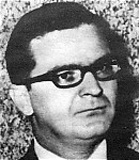
Richard Cain, also known as Richard Scalzitti, was a notoriously corrupt Chicago police officer and a close associate of Mafia boss Sam Giancana.
Anthony D'Andrea was an Italian-born Mafia boss of Chicago in the late 1910s to early 1920s. He was also a Democrat and a political leader who was a president of the Unione Siciliana and was involved in a heated battle for alderman. D'Andrea was killed by an assassin's bullet in 1921.
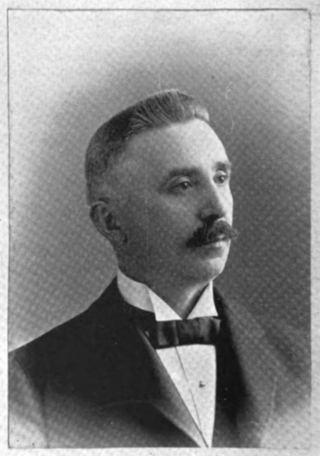
John Powers served as an alderman in Chicago, Illinois for the Democratic Party. He was known as Johnny De Pow by his constituents. Along with Bathhouse John Coughlin and Hinky Dink Kenna, Powers was considered one of the leaders of the "Gray Wolves" of Chicago politics.
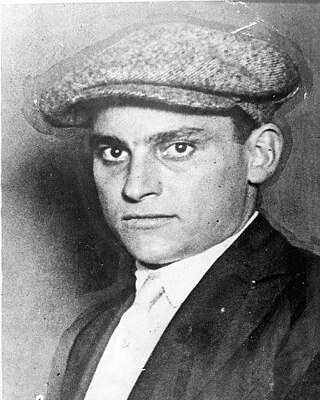
Angelo "Bloody Angelo" Genna was an Italian-born Chicago bootlegger and organized crime leader during the Prohibition era. A key member of the Sicilian crime family, primarily made up of his brothers, he was best known for his war with the North Side Gang leader, Dean O'Banion.
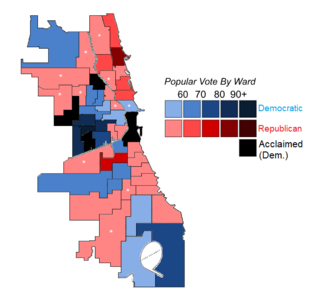
The 1929 Chicago aldermanic election was held on February 26, 1929, with a runoff on April 2, to elect the 50 members of the Chicago City Council. The elections were non-partisan. Held in the middle of mayor William Hale Thompson's term, it would be the penultimate midterm election; four-year terms for aldermen were adopted in 1935, coinciding with the mayoral election that year.

Dorsey Ryan Crowe was an American politician who served as alderman of Chicago's 21st ward from 1919 to 1923 and upon its redistricting into the 42nd ward from 1923 to his death. A Democrat serving most of the Near North Side, he represented such affluent constituencies as the Gold Coast and Streeterville as well as such poor areas as Cabrini–Green and Goose Island. At the time of his death he was the Dean of the Chicago City Council, as well as the last alderman from the era of partisan aldermanic elections and when wards elected two aldermen each. An alderman for 43 years, and the last to have served under a Republican mayor, he is as of 2018 the third-longest serving alderman in Chicago history, behind Ed Burke of the 14th ward and John Coughlin of the 1st.
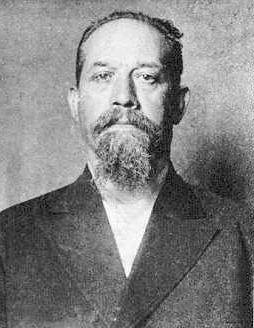
Galleanisti are followers or supporters of the insurrectionary anarchist Luigi Galleani, who operated most notably in the United States following his immigration to the country. The vast majority of Galleanisti or Galleanists were similarly poor and working class Italian immigrants or Italian Americans, and especially Italian anarchists and Italian immigrants or Italian-Americans involved in the labor movement of the time. Galleanists remain the primary suspects in a campaign of bombings between 1914 and 1920 in the United States.

The 1924 Cicero, Illinois, municipal elections were elections held in 1924 to select municipal officers in Cicero, Illinois. The elections were notable for the gang-related violence which took place.
This is a list of organized crime in the 1920s, arranged chronologically.
References
- ↑ "Friday's gangster tour of Chicago" . The Chicago Tribune. October 23, 1987. Retrieved August 3, 2019.